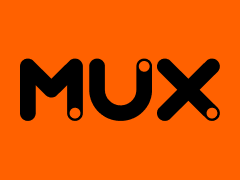By John Gruber

Mux — Video API for developers. Build in one sprint or less.
Pound the Quality
Tuesday, 27 October 2009
“If you have the facts on your side, pound the facts. If you have the law on your side, pound the law. If you have neither on your side, pound the table.”
—Legal Adage
Much of the current hype surrounding the App Store centers around the sheer number of apps available. Apple’s “there’s an app for that” slogan hinges on it, for one thing. Robert Scoble wrote a much-linked-to piece this week titled “85,000 Reasons Why the iPhone Isn’t Going to Be Disrupted”. Ian Betteridge largely agreed with Scoble.
And the 85,000 number is, just a few days later, already out of date. App Shopper claims there are 93,144 apps in the store at this writing.
Scoble makes a good argument for how the App Store’s sheer size is a big competitive advantage for Apple. But I think what’s being missed is how this is a competitive advantage. It’s a sign that the iPhone and the App Store are popular, and it’s a self-perpetuating form of popularity, in that developers go where the action is, and users go where the software is.
The danger I see is in conflating cause and effect. Is the App Store popular because the iPhone is great? Or is the iPhone great because the App Store is popular? There’s a big difference between those two arguments. The latter is the argument Microsoft has long made regarding the advantage of Windows: Windows is great because Windows has the most software and most developers.
The iPhone has turned that around, and it’s driving Microsoft executives batty. The situation is so at odds with Microsoft’s view of the computing universe that Steve Ballmer came up with this cockamamie explanation: “The Internet was designed for the PC. The Internet is not designed for the iPhone. That’s why they’ve got 75,000 applications — they’re all trying to make the Internet look decent on the iPhone.” Pound the table, indeed.
The simplest reduction of the age-old Mac-vs.-Windows debate is quality-vs.-quantity. But I don’t blame Apple for bragging about the sheer number of iPhone apps available, because it’s something that can be measured. It’s a powerful marketing point because it is an undeniable fact: there are nearly 100,000 apps, and more every week. You can’t quantify the advantage Mac software has over Windows.
But my interest remains, as ever, in the quality of the apps, not the quantity. Let’s say that when the dust starts to settle in this market, Android winds up with far fewer total apps than iPhone OS, but they’re of generally higher quality. That would make Android the Mac to the iPhone’s Windows. I would switch to that platform. (Feel free to substitute WebOS for Android in the above hypothetical.)
The number of apps already in the store — and, even more so, the momentum with which new ones are being added — almost certainly guarantees the continuing popularity of the iPhone and iPod Touch for the next few years. But Windows is proof that popularity doesn’t guarantee market-leading quality.
